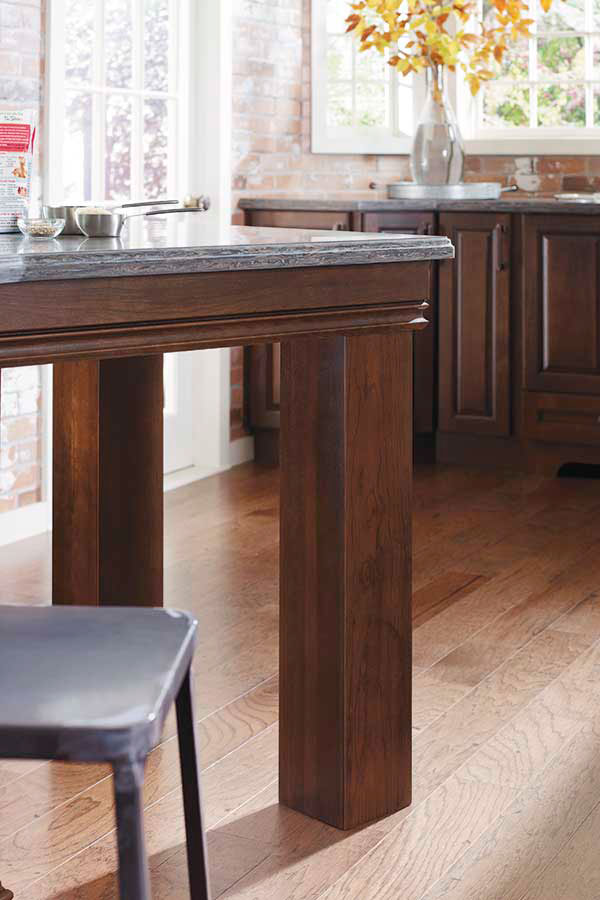Vital Factors to Consider When Picking Legs For Kitchen Area Island
Choosing the proper legs for a cooking area island includes a mindful assessment of numerous factors that can considerably influence both functionality and aesthetic appeal. As we check out these components, it ends up being clear that each choice can have significant effects for the total kitchen area experience.
Product Options
When selecting legs for a kitchen island, understanding the numerous product choices is essential for achieving both visual charm and architectural stability (Legs For Kitchen Island). The option of product considerably influences not just the resilience of the island but additionally its overall design and functionality
Wood is a popular choice, providing warmth and versatility. Strong hardwoods, such as oak or maple, offer stamina and can be tarnished or repainted to match the cooking area design. Metal legs, commonly made from stainless-steel or wrought iron, contribute a industrial and contemporary feel while guaranteeing longevity and security. These materials are resistant to use and can sustain significant weight, making them optimal for larger islands.
Another choice is crafted products, like MDF or plywood, which can be much more economical while still offering a series of surfaces. Nevertheless, they may not supply the same level of security as solid timber or metal. Materials such as acrylic or glass can develop a modern look, though they might need additional assistance to guarantee stability.
Eventually, the selection of product for kitchen area island legs must straighten with the wanted performance and the overall motif of the kitchen area.
Design And Style

When considering style, the form and finish of the legs are essential. Tapered legs can offer a feeling of agility and sophistication, while thicker, a lot more robust legs can communicate stamina and stability. In addition, the finish-- be it painted, tarnished, or natural-- must match the cabinets and counter top materials to develop a unified appearance.
In addition, the layout of the legs can also mirror individual preference. Customized or ornamental legs, such as those featuring complex carvings or one-of-a-kind geometric forms, can function as prime focus, adding character and character to the cooking area. Inevitably, the ideal option will certainly not only enhance capability but likewise elevate the aesthetic charm, making the cooking area island a standout feature of the home.
Height Considerations
Choosing the suitable elevation for kitchen island legs is crucial, as it straight influences both performance and convenience. The basic height for a kitchen area island commonly ranges from 36 to 42 inches, lining up with typical countertop elevations. A 36-inch elevation is ideal for cooking and food preparation, enabling comfy use kitchen home appliances and devices. Conversely, an elevation of 42 inches is often liked for islands meant for bar seats, suiting taller feceses and providing a laid-back dining experience.

It is additionally necessary to make up users' preferences and elevations. Tailoring the height can make sure a comfy experience for all relative, making the kitchen area island an extra practical and pleasurable room.
Weight Assistance
Guaranteeing ample weight support for cooking area island legs is important for both safety and security and capability. The cooking area island typically offers numerous objectives, consisting of food prep work, dining, and additional storage space, necessitating a robust support structure. When selecting legs, it is important More Info to think about the overall weight capability needed based on the island's meant use and the products that will be put on it.
The choice of product for the legs plays a substantial duty in their weight-bearing abilities. Solid wood, metal, and durable composites generally offer superior strength compared to lighter materials. Additionally, the style of the legs-- whether they are right, tapered, or have a pedestal form-- can affect their capability to disperse weight effectively across the framework.
Always get in touch with the maker's specifications concerning lots restrictions to make sure that the legs can sustain the designated weight without compromising safety and security. In summary, selecting cooking area island legs with appropriate weight support is vital for creating a practical and risk-free culinary room.
Installment and Maintenance
Correct installation and maintenance of kitchen island legs are essential for making certain longevity and security. This commonly includes securing the legs to the island base utilizing appropriate fasteners, making sure that the legs are level and straightened.
Once set up, routine upkeep is necessary to maintain the stability and appearance of the legs - Legs For Kitchen Island. For wood legs, routine cleaning with a damp fabric and application of suitable timber polish can stop wetness damages and keep their surface. Metal legs may require a mild cleaning solution to get rid of oil and gunk, followed by a completely dry cloth to avoid corrosion formation
Furthermore, evaluate the legs frequently for signs of wear or damage, such as cracks or loosened joints. Tightening screws or screws as needed can also prolong the lifespan of the legs. By sticking to these setup and upkeep methods, property owners can guarantee that their kitchen island stays sturdy and aesthetically appealing for several years to find.
Conclusion

Visual coherence is vital in selecting the style and design of legs for a cooking area island, as these aspects greatly affect the total setting of the area. Tapered legs can offer a feeling of lightness and style, while thicker, extra durable legs can convey toughness and stability.Picking the proper elevation for kitchen island legs is critical, as it directly impacts both performance and convenience. In summary, picking kitchen island legs with appropriate weight assistance is essential for creating a safe and functional cooking space.
In conclusion, picking legs for a cooking area island demands cautious factor to consider of different elements, including product choices, design, height, weight support, and installment.